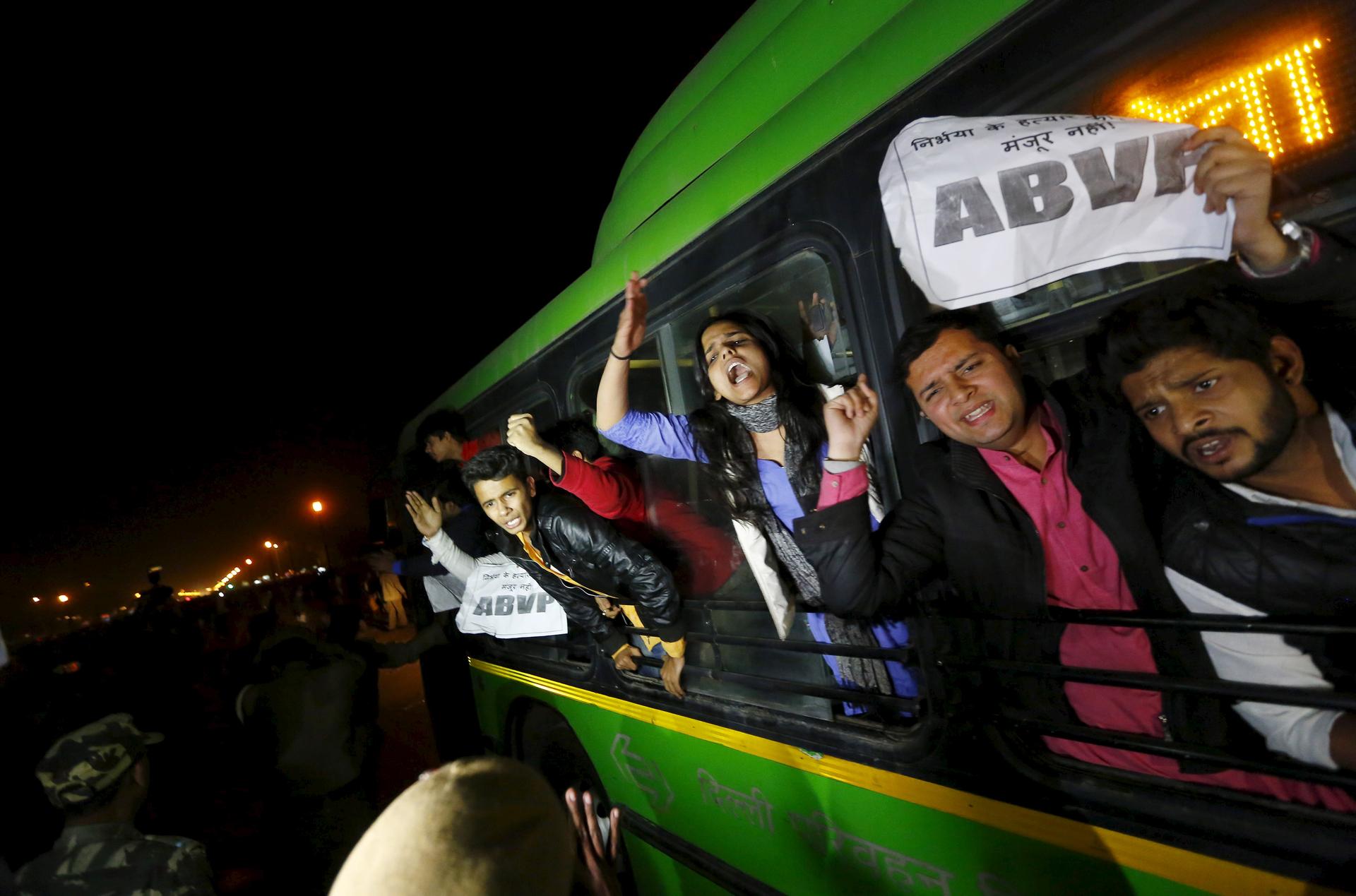Demonstrators shout slogans from a police bus after being detained by police during a protest against the release of a juvenile rape convict, in New Delhi, India, December 20, 2015. The youngest of six people convicted of the 2012 gang rape of a woman, in a case that shocked India, was freed on Sunday, a lawyer said, after a court refused to extend his three-year sentence.
The Indian Parliament approved a controversial bill that allows adolescents as young as 16 to be tried as adults for committing “heinous crimes.”
The bill was a direct result of widespread public outrage over the release of the youngest perpetrator in the Delhi gang rape case. The perpetrator (just six months away from adulthood in December 2012) was tried as a juvenile and sentenced to three years in a correctional facility.
The parents of the Delhi gang rape victim, who supported this bill have told the Indian media that they are satisfied. “I am satisfied, but sad my daughter couldn’t get justice,” Asha Devi, the victim’s mother told the Times of India, after the bill passed.
I met Asha Devi and her husband, Badrinath Singh on two occasions earlier this year. Both times, they spoke to me about their concerns about the juvenile perpetrator’s release. Their biggest worry was what was to stop this young man from raping other women. “If he does something again, the blame will go on the government,” Bradrinath Singh said. Speaking with them, I understood the depth of their pain and their genuine concern for the safety of other girls and women.
The new law they support won’t affect the young man who raped their daughter. He was released last week and taken to an undisclosed location by the police. But juveniles committing such crimes in the future could be sentenced to seven years or more, or even to death.
People who pushed for the new law often refer to the sheer brutality of the juvenile perpetrator in the Delhi gang rape case. Media reports portrayed him as the most violent of the perpetrators. (Those accounts were later proven wrong by the police. But the myth of his brutality has persisted, despite facts.) Their point is if an adolescent can behave like the most brutal of adults, why shouldn’t he be tried as an adult?
It’s a fair question. But how often do adolescents commit such crimes? Less than 1.2 percent of crimes in India are committed by juveniles, Harsh Mander, the director of the Center for Equity Studies wrote in Scroll. Besides, as women’s rights activists in India point out, most rape cases where the alleged perpetrator is a juvenile are reported by parents, who disapprove of their minor girls’ relationship with a boy, who often belongs to a different caste, class or religion. Mander believes that the new law will only hurt disadvantaged children. “Fifty-six perecent of crimes come from families with a maximum annual income of Rs. 25,000 ($400), while 53 percent juveniles are either illiterate or educated only till primary school,” he writes.
Even prominent human rights lawyers and women’s rights activist do not support the new law. As activist Kavita Krishnan writes, the vast majority of child sexual abuses are in fact by adults, and are rarely reported. Not to mention that the vast majority of rapes and sexual assaults worldwide are by perpetrators who are known to victims.
That is why critics of the law say it's just a feel-good measure, falling far short of all the legal, judicial and cultural changes that need to happen to stop violence against women.
